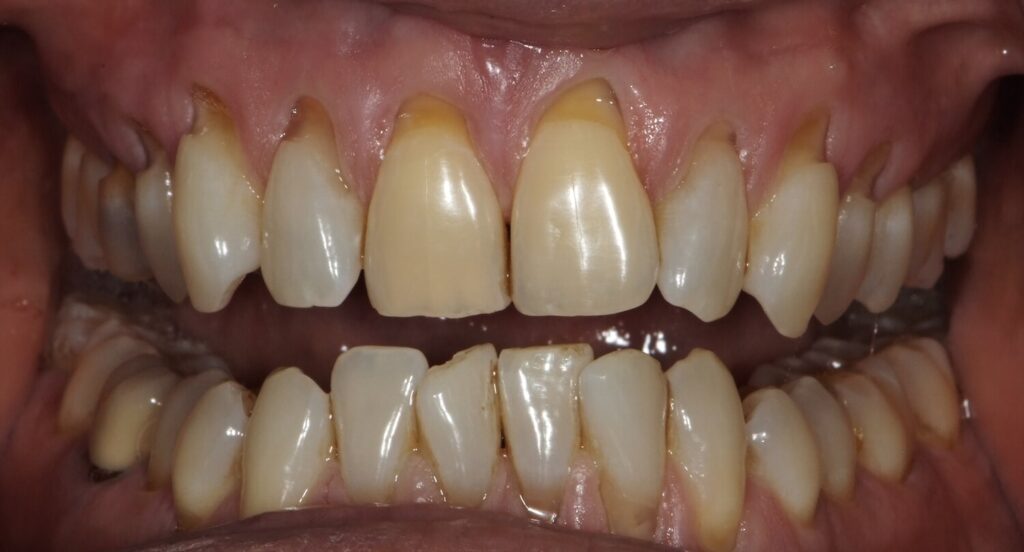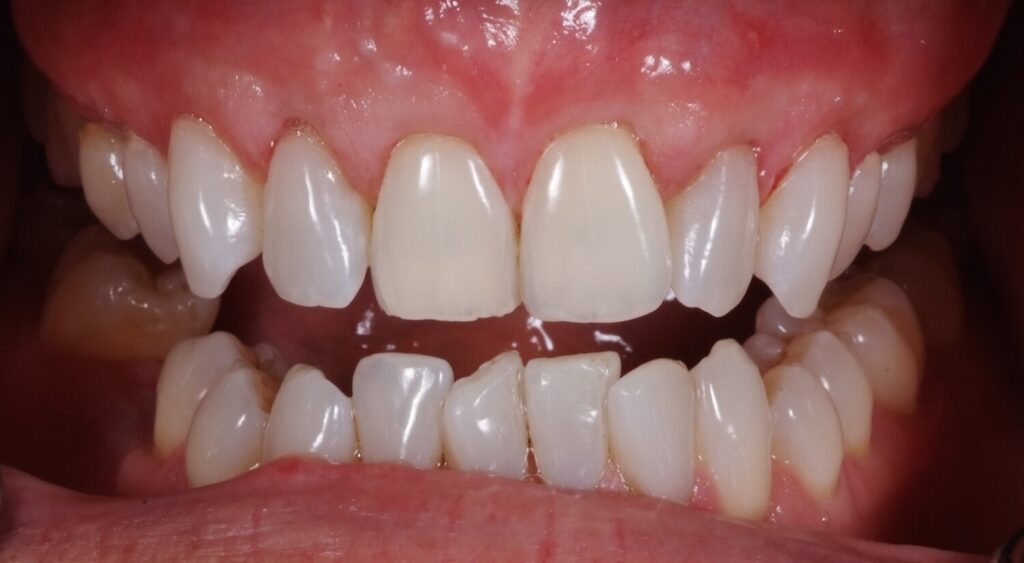Gum recession is a major concern for many of our patients due to the poor esthetics and the possibility of sensitivity and decay. Studies have shown that 50% of people between 18-64 years of age have one or more sites with recession and 23.8 million people have one or more tooth surfaces with greater than or equal to 3 mm of gingival recession. In this article, we will go over the common causes, myths, and treatment for gum recession to help our patients get a healthier smile.
In this article:
Causes of Gum Recession:
-Poor Oral Hygiene
-Age
-Smoking
-Grinding & Clenching
-Orthodontics
-Oral Piercings
How to Prevent Gum Recession
How to treat Gum Recession
What Are The Causes Of Gum Recession?
POOR ORAL HYGIENE
We all know that we have to brush our teeth twice a day to keep our teeth clean and breath smelling fresh. The question we should be asking is, “how hard should we brush, and is a soft toothbrush or hard toothbrush better?” Many people think that they must brush very forcefully in order to remove the plaque on their teeth. People also believe that using a brush with harder bristles removes plaque more effectively. Both of these widely-held beliefs are myths, and are major causes of gum recession! You must remember that plaque is a soft material like that of cottage cheese and can be easily removed by brushing gently with a SOFT toothbrush. If anything cannot be removed with a soft toothbrush, this is probably calcified plaque or “calculus”, which should only be removed by a dental professional. So, what happens if you do brush hard or brush with a hard toothbrush? Recession! One study found that recession was found to be more pronounced for subjects with a history of hard toothbrush use, with a mean of 9.4% receded surfaces versus 4.7% for those who had never used a hard brush2. For users of hard toothbrushes, the percent of surfaces with recession showed a significant and dramatic increase with increasing brushing frequency; this effect did not exist for those without a history of hard brush use.
AGE

“No matter how well I took care of my teeth, the older I got, the more my gums started to recede.”
This is a common problem we have seen in our office, and has also been well-documented by research. One study showed that the relation with age was highly significant. Regression analysis showed that the percent of surfaces with recession tends to increase about 3.5 percent per decade3. This is due to increased time with possible abrasives like hard toothbrushes, periodontal disease, medications that could disrupt the oral cavity and life getting in the way of your oral hygiene.
SMOKING
Everyone knows that smoking is a huge health risk, especially to your oral health. Smoking has been linked to bad breath, oral cancer, bone loss, and throat cancer4. One thing that many people don’t consider when they smoke, is that it also contributes to gum recession! Studies have shown that cigarette smoking is strongly associated with occurrence of localized and generalized gingival recession in all age groups.
GRINDING & CLENCHING
One cause of gum recession that most patients don’t consider is clenching and grinding their teeth. The enamel near the gums becomes very thin by natural design. The bad part is that when you are clenching and grinding your teeth and putting on a huge amount of force, the very thin enamel by the gumline can chip off which can start the gum recession cascade. In your mouth, you have gum tissue and cheek tissue. Gum tissue is very dense and acts like a seal. Cheek tissue or “mucosa” is very soft and flabby. When you don’t have gum tissue, your gums will recede much quicker. One study showed that a mucogingival problem (lack of gum tissue) and occlusal trauma (clenching and grinding) act together and caused severe gingival recession5.
ORTHODONTICS
Did you know that orthodontics can cause gum recession if done improperly? When the teeth are moved towards the lips or cheeks, they can leave what is called “the boney envelope”. When this happens, the bone goes away on the outside of the tooth, and the gums follow suit. This is when you start to see the roots of the teeth. One study showed teeth that were more angled out towards the lips/cheeks had a higher occurrence or severity of gingival recession6.
ORAL PIERCINGS
Body piercings are a common way to express one’s self and show individuality. The bad side about these piercings is the damage they can cause on oral hard and soft tissues such as teeth and gums. Placement of these piercings is usually done by nonmedical professionals who are sometimes unaware of anatomic characteristics of the oral and perioral area. Studies have shown that both tongue and lip piercings have been shown to cause tooth abrasion and gum recession after only 6 months of use7. We always recommend professional dental or medical consultation before any oral piercings to assess the risk.
How To Prevent Gum Recession:
The good news is that gum recession is usually preventable! The best ways to prevent gum recession are to avoid all of the previously mentioned causes above such as brushing with a hard toothbrush, smoking, grinding, and oral piercings. If you suspect that you are at risk for gum recession or have pain or sensitivity, you should always consult with a dental professional.
How to treat gum recession:
There are different severities of gum recession from minor to severe. Sometimes minor gum recession simply needs to be periodically monitored by your dentist whereas severe gum recession will require some type of treatment to fix the problem. There are many ways to treat gum recession and they range from minimally invasive to more traditional treatments.
For more info about treating gum recession and to schedule a consultation visit our page about reversing gum recession or fill out a contact form!
Before & After Treating Gum Recession:


References
- Journal of Periodontology January 1999, Vol. 70, No. 1, Pages 30-43
- Journal of Periodontology September 1993, Vol. 64, No. 9, Pages 900-905
- Journal of Periodontology September 1993, Vol. 64, No. 9
- J Int Soc Prev Community Dent. 2012 Jul-Dec; 2(2): 69–74.
- April 2008 – Vol.2 European Journal of Dentistry
- Orthodontic therapy and gingival recession: a systematic review
- Journal of Periodontology November 2000, Vol. 71, No. 11, Pages 1767-1769






Thank you so much for a wonder explanation.